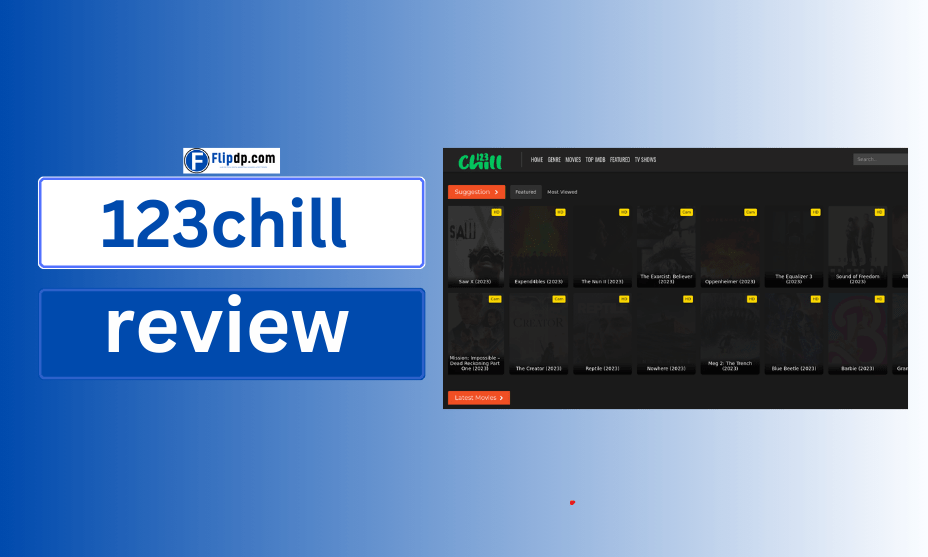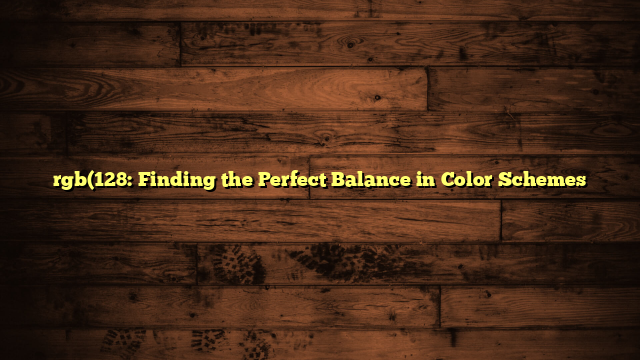Color is an essential element in design, influencing emotions and driving decision-making. Among the various methods to represent colors, the RGB color model is widely used in digital graphics. The shorthand “RGB(128,” signifies a specific shade of color that opens doors to creativity. This article will explore the significance of RGB(128), its implications for color schemes, and how to utilize it to create a visually appealing design that strikes the right balance. Whether you’re a designer, an artist, or simply someone who appreciates aesthetic beauty, understanding RGB colors is crucial.
The Basics of RGB Color Model
At its core, the RGB color model supports the creation of colors through the combination of three primary colors: red, green, and blue. Each color can be represented with a value ranging from 0 to 255. When these three colors are mixed in varying combinations, a broad spectrum of colors can be achieved.
- RGB(128, 0, 0): A medium red.
- RGB(0, 128, 0): A medium green.
- RGB(0, 0, 128): A medium blue.
The significance of RGB(128) is that it represents a standard for achieving balance between these colors. It serves as a middle point, providing designers with a versatile tool for balancing light and dark shades, and warm and cool tones.
Understanding the Value of RGB(128)
When discussing RGB(128), it’s important to note that the “128” refers to the intensity of red, green, or blue. For instance:
- RGB(128, 128, 128) is considered gray and implies equal parts of red, green, and blue, creating a stable tone.
- RGB(128, 64, 64) introduces a warmer hue by balancing red with a minimal amount of green and blue.
This nuanced understanding enhances the ability of designers to craft aesthetically pleasing visuals that evoke specific sentiments or achieve particular design goals.
Colors and Emotions: How RGB(128) Fits In
Color plays a pivotal role in evoking emotions. Here’s how the value of 128 in RGB affects perceptions:
- Calmness: Shades derived from RGB(128) often have a calming effect. Gentle greens and grays promote tranquility.
- Stability: Earthy tones like those found in RGB(128, 128, 0) convey reliability.
- Energy: Introducing red in combinations like RGB(128, 0, 0) lends an energetic touch to designs.
By understanding the psychological implications of using RGB(128), designers can choose appropriate combinations that resonate with their target audience.
Creating Harmonious Color Schemes with RGB(128)
Now that we’ve established the basics of RGB(128), let’s explore how to incorporate it into cohesive and compelling color schemes. Here are some popular methods:
1. Complementary Color Schemes
A complementary color scheme uses colors opposite one another on the color wheel. For RGB(128), complementary colors arise around the hues of cyan or teal. For example:
RGB(128, 128, 128) (Gray) pairs beautifully with RGB(128, 255, 255) (Cyan).
This striking contrast creates a visual interest, making designs pop while still retaining harmony.
2. Analogous Color Schemes
Analogous colors sit next to each other on the color wheel. By choosing colors close to RGB(128), designers can create subtle, serene themes:
Using RGB(128, 0, 0) (Medium Red), RGB(128, 64, 0) (Brown), and RGB(128, 128, 0) (Olive) will create a warm palette that feels homogeneous without being dull.
This method is ideal for applications focused on creating a unified aesthetic without overwhelming viewers.
3. Triadic Color Schemes
Taking it a step further, a triadic color scheme incorporates three colors evenly spaced around the color wheel. For instance, using RGB(128) can be expanded into:
- RGB(128, 0, 0) (Medium Red)
- RGB(0, 128, 0) (Medium Green)
- RGB(0, 0, 128) (Medium Blue)
This vibrant combination ensures balance while still providing a dynamic and engaging design.
Practical Applications of RGB(128)
Web Design
In web design, the right balance of colors can greatly enhance the user experience. Using shades like RGB(128) can lead to a more interactive and inviting interface. Backgrounds using RGB(128) tones can ease readability while ensuring that buttons and calls-to-action stand out effectively.
Branding
Brands often leverage specific RGB values to convey their identity. Companies can benefit from colors featuring RGB(128) to express traits like reliability and calmness. Utilizing these specific colors in logos and merchandise can strengthen brand recognition and appeal.
Art and Illustrations
For artists, understanding RGB(128) opens avenues for color mixing both digitally and physically. In digital illustrations, artists can experiment with RGB values to create depth and dimension, making their artwork more visually compelling.
Actionable Insights for Designers
Here’s a quick recap of actionable insights you can apply in your next project focusing on RGB(128):
- Balance Colors: Focus on how RGB(128) can help achieve equilibrium in your design.
- Experiment with Combinations: Don’t be afraid to mix harmonious or contrasting colors to see how RGB(128) can work in various schemes.
- Consider the Audience: Tailor color choices around emotions and psychology, ensuring your RGB(128) choices resonate with your target audience.
- Keep Accessibility in Mind: Verify contrast ratios to ensure that your design is accessible to everyone. Colors created from RGB(128) can aid in achieving this.
Conclusion
In conclusion, the RGB color model, particularly RGB(128), is an invaluable resource for anyone looking to create striking and balanced designs. Understanding the nuances of RGB values can help designers harness the emotional power of color and create compelling visuals. By mastering how to apply RGB(128) within various color schemes—complementary, analogous, and triadic—you can enhance your design work and achieve a striking aesthetic. Whether you’re designing a website, branding a product, or creating a piece of art, remember that finding the perfect balance in color schemes can elevate your project to new heights. So start experimenting today, and see how RGB(128) can transform your designs into stunning masterpieces!











